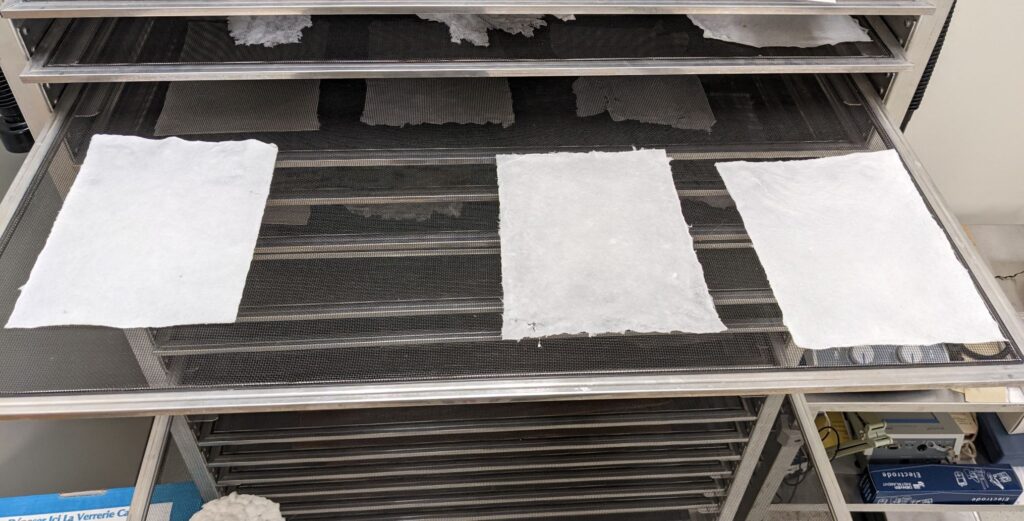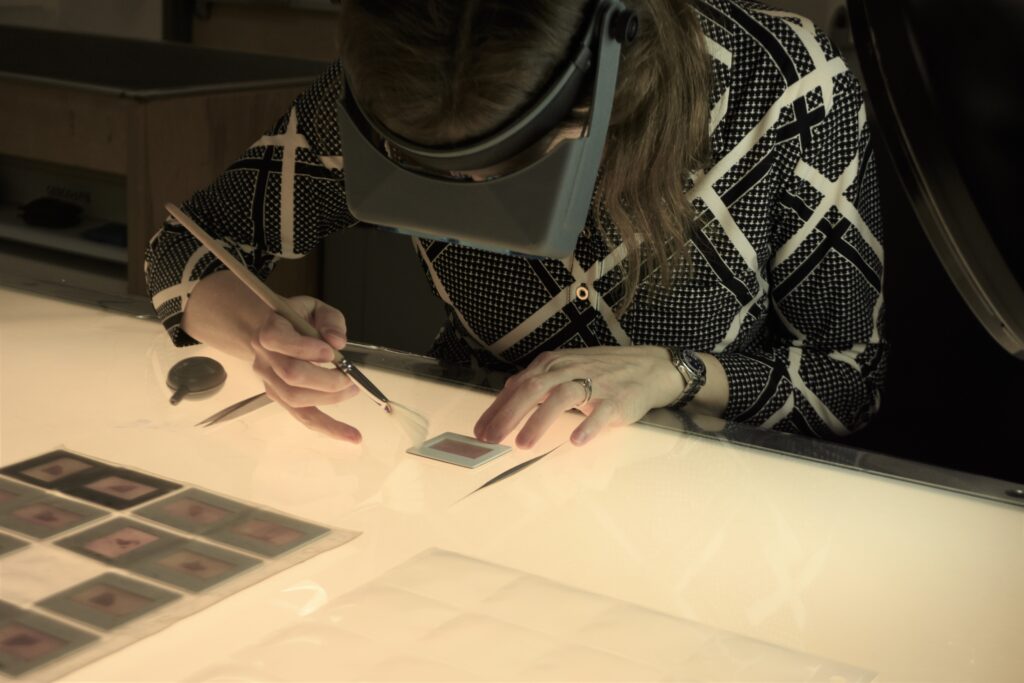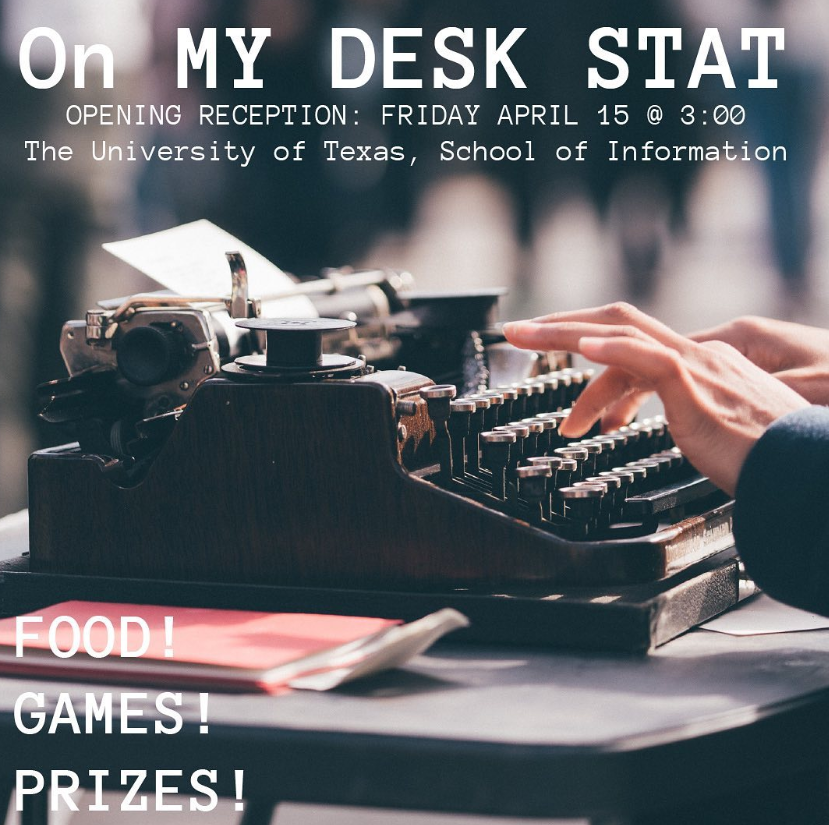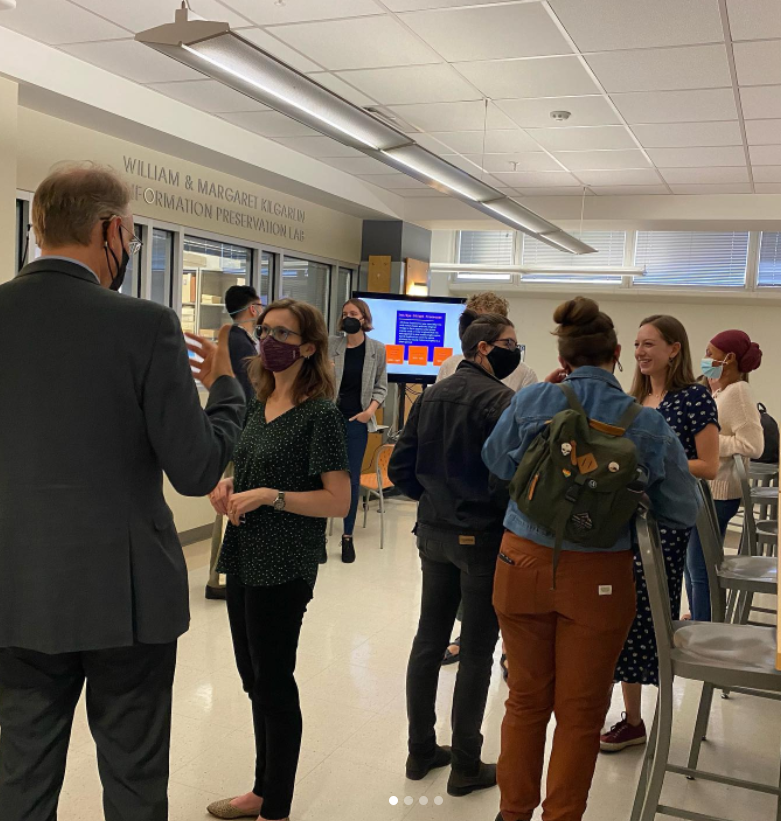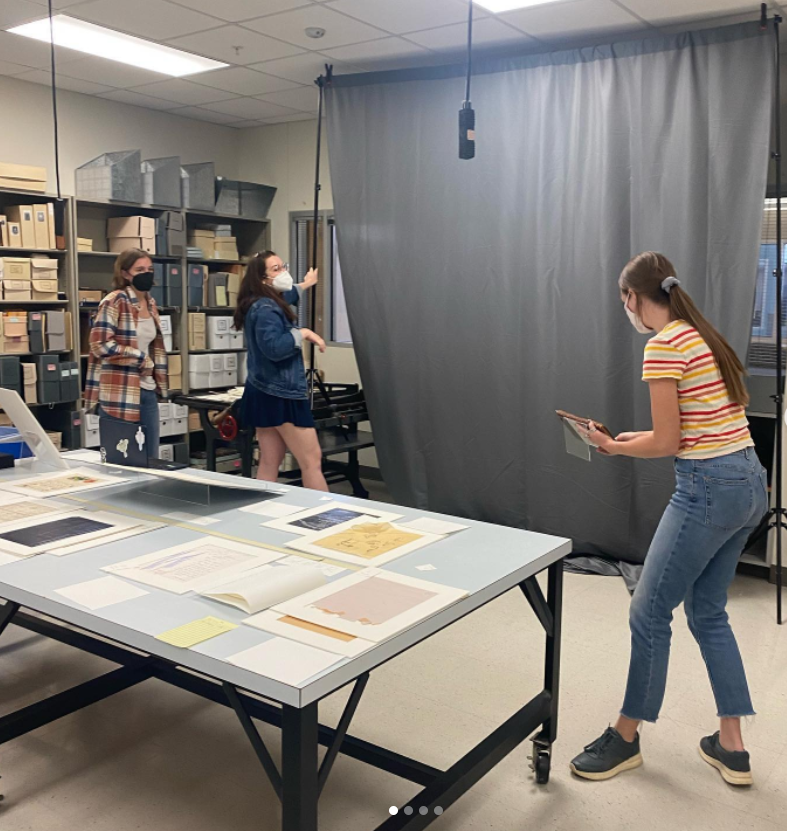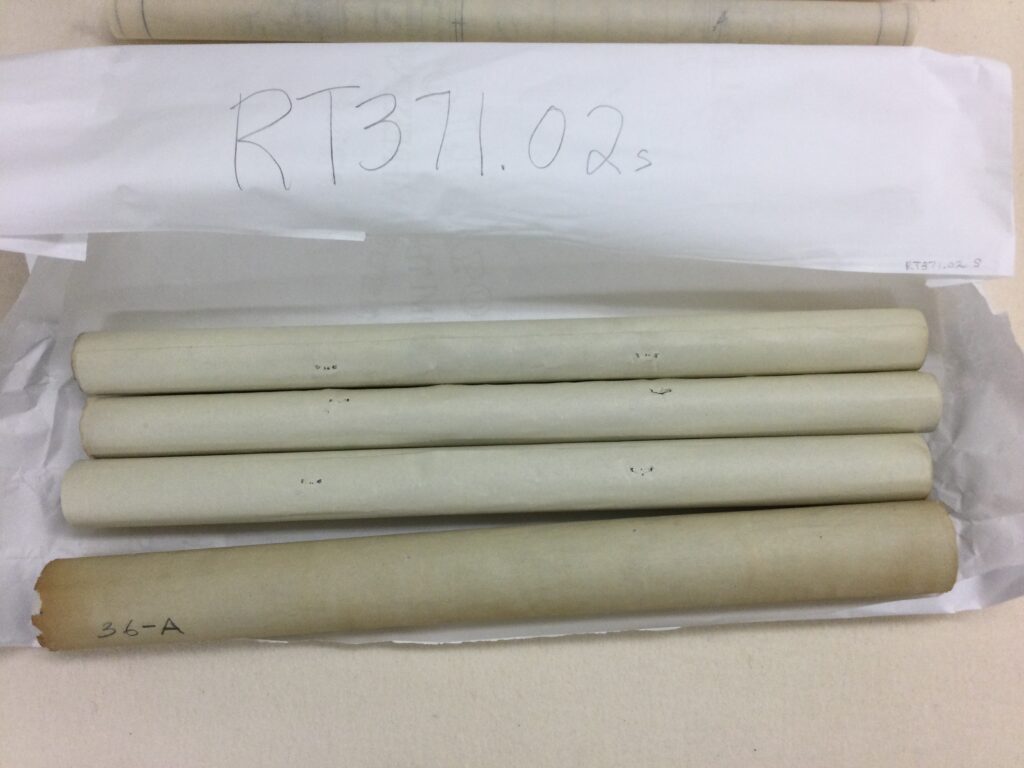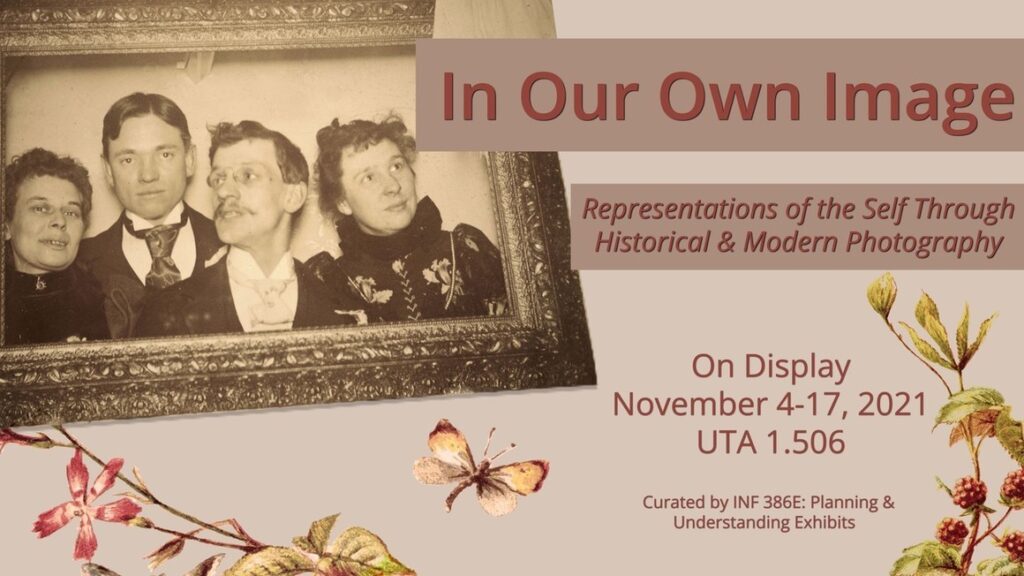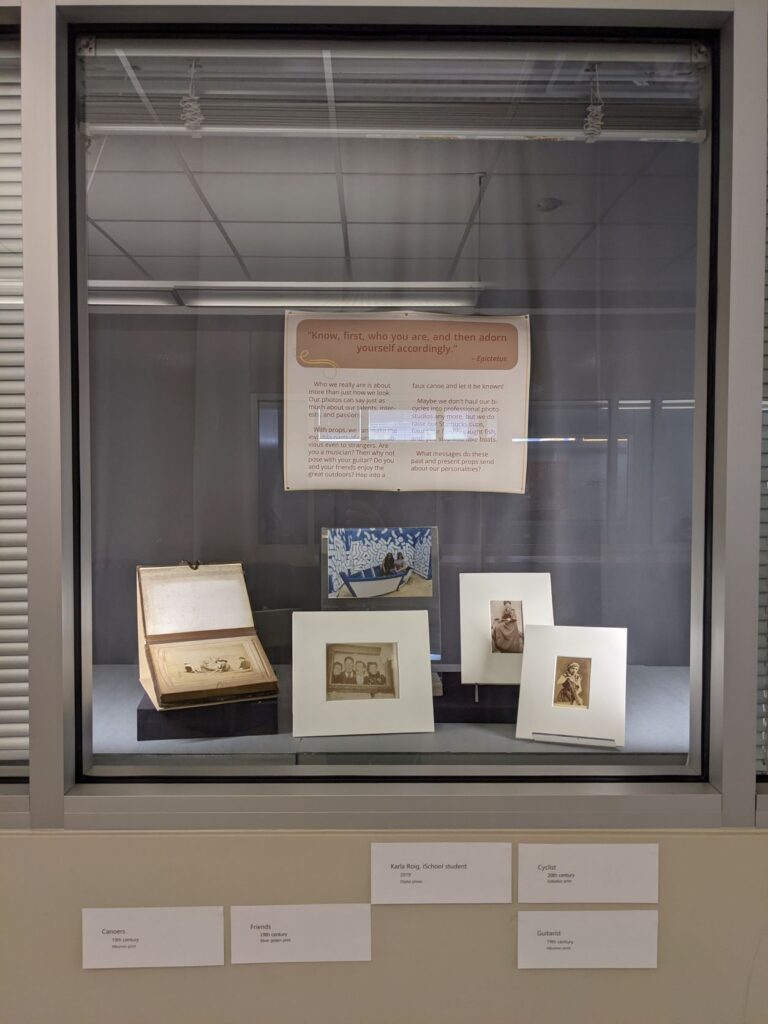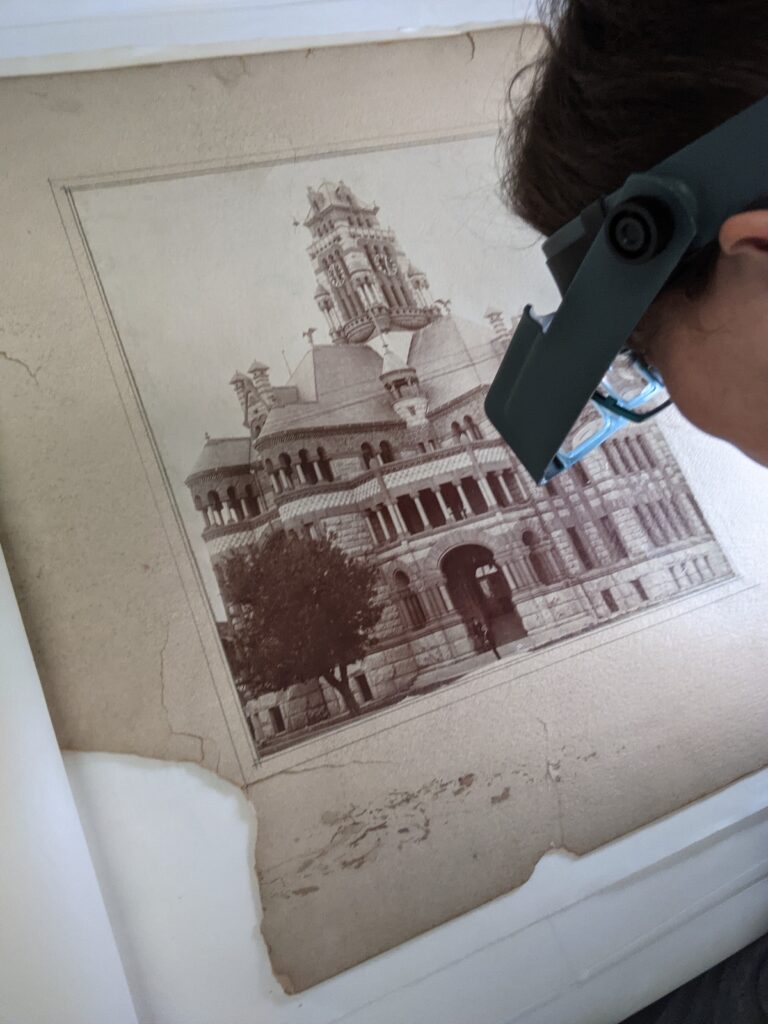This week, students in my course INF 393C Preservation Science and Practice tried their hand at making paper. Paper is made from a vat of macerated cellulose fibers in water.
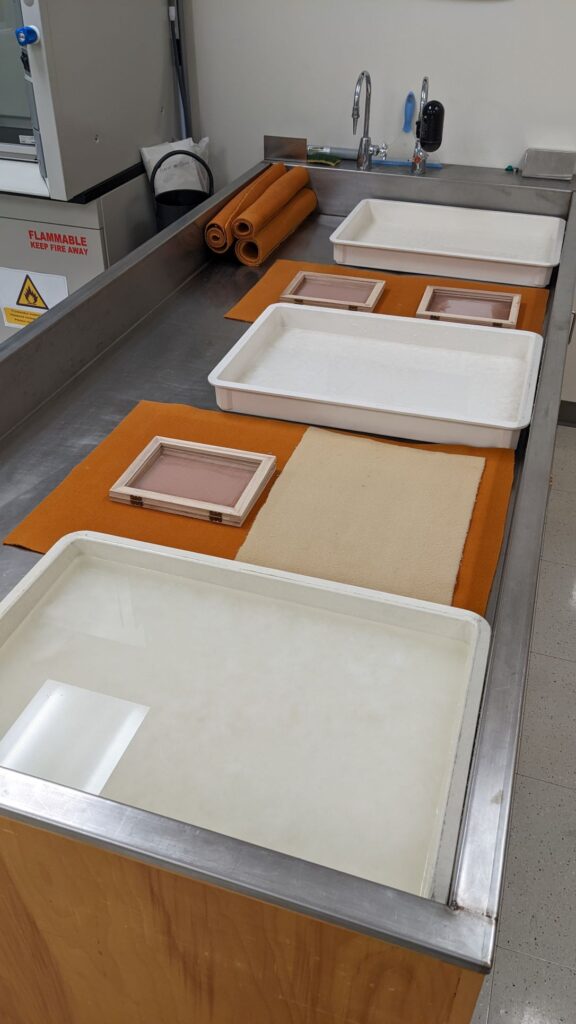
When a thin slurry of fibers is deposited on a screen, the fibers begin to undergo hydrogen bonding. This bonding, along with physical entanglement, is what creates a sheet of paper.

As we learn in class, a great deal of activity can occur over time at these hydrogen bonding sites. Hydrogen bonds are weak bonds, and they’re prone to break in the presence of pollutants, atmospheric moisture, light, and other agents. When they break, the cellulose strands shorten, and the paper gradually becomes fragile and brittle. Through the preservation measures studied in class, we aim to slow down this process and prolong the lifetime of cultural materials.
